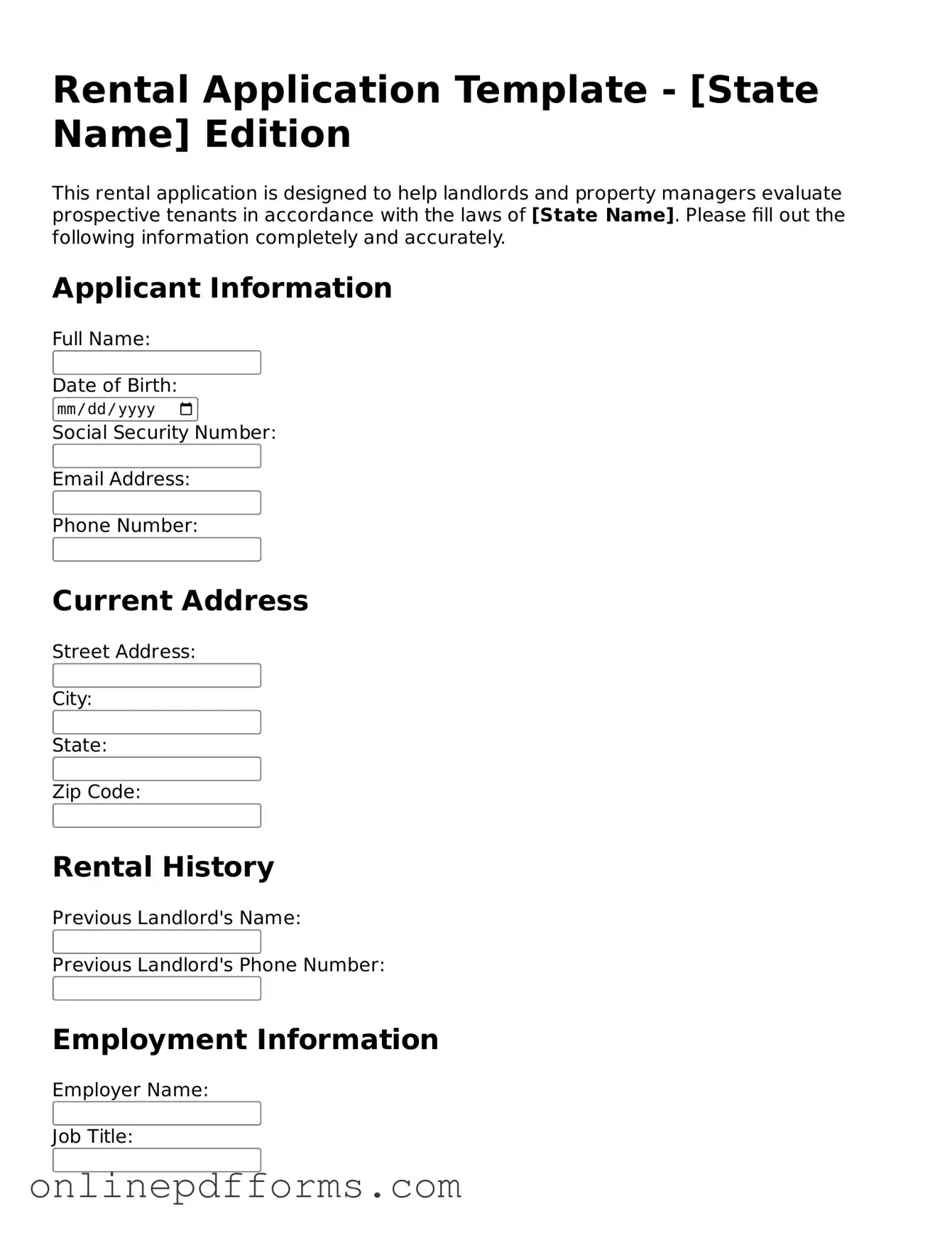The Rental Agreement is closely related to the Rental Application form. While the application is used to gather information about potential tenants, the rental agreement is a contract that outlines the terms and conditions of the lease. Both documents require personal information and financial details, but the rental agreement formalizes the relationship between the landlord and tenant once the application is approved.
A Credit Check Authorization form is another document that shares similarities with the Rental Application. This form allows landlords to obtain a tenant’s credit report, which helps assess their financial responsibility. Like the rental application, it requires personal information, including Social Security numbers and addresses. Both documents are essential in determining the suitability of a potential tenant.
The Employment Verification form also parallels the Rental Application. This document is used to confirm a tenant's employment status and income level, which are crucial for assessing their ability to pay rent. Similar to the rental application, it collects information about the applicant's job, salary, and employer, providing landlords with a clearer picture of the tenant’s financial stability.
The Background Check Authorization form is another document that is often associated with the Rental Application. This form allows landlords to conduct background checks on potential tenants, including criminal history. Like the rental application, it requires the applicant's consent and personal information, ensuring that landlords can make informed decisions based on the applicant's history.
The Lease Guarantor form is similar to the Rental Application in that it seeks to provide additional security for landlords. If a tenant has insufficient credit or income, a guarantor can agree to take on financial responsibility. Both documents require personal and financial information, helping landlords assess the reliability of both the tenant and the guarantor.
A Pet Application form is also akin to the Rental Application. If a tenant wishes to bring a pet into a rental property, this document collects information about the pet, including breed and size. Both forms require details about the applicant and help landlords determine if the tenant and their pet meet property guidelines.
The Move-In Checklist is another document that relates to the Rental Application. While the application assesses a tenant's qualifications, the move-in checklist records the condition of the property before a tenant moves in. Both documents protect the interests of landlords and tenants by ensuring that expectations are clear and that any existing issues are documented.
Finally, the Tenant Information form is similar to the Rental Application in that it gathers essential information about the tenant. This form may include emergency contact details, rental history, and references. Both documents serve to provide landlords with a comprehensive view of the tenant, ensuring a smooth rental process.
